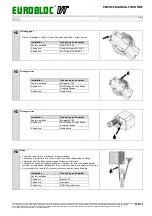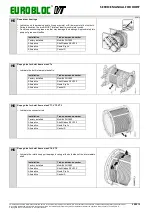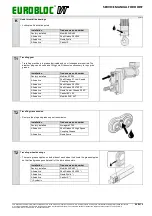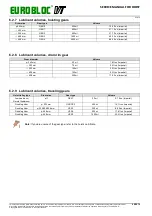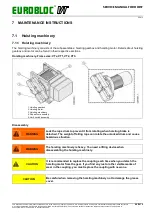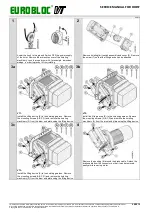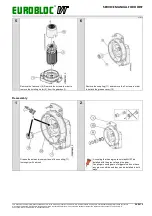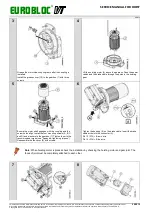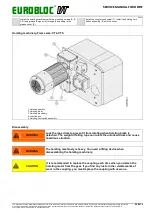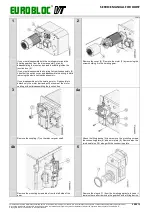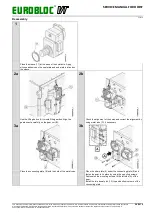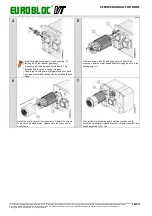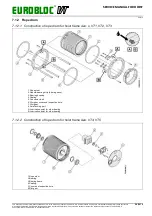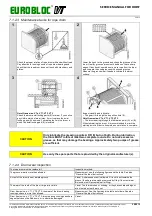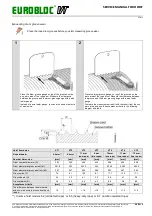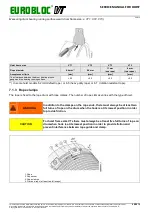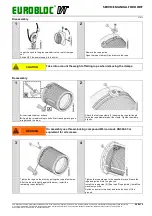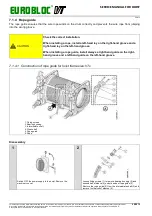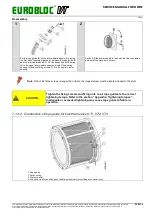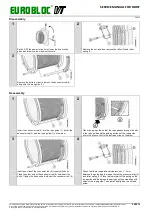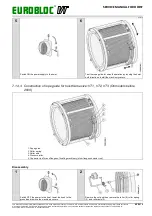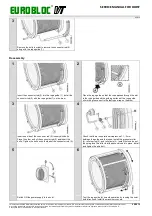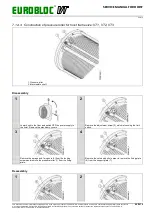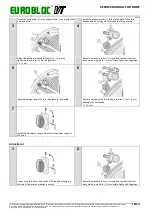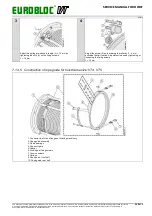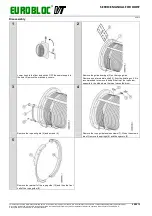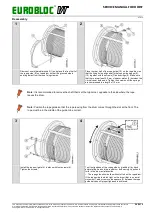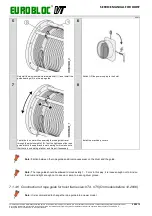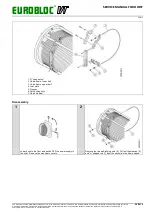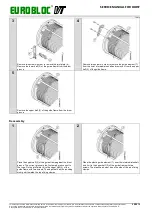
EUROBLOC
SERVICE MANUAL FOR HOIST
55/212
This document and the information contained herein, is the exclusive property of Verlinde S.A.S. and represents a non-public, confidential and proprietary trade secret that
may not be reproduced, disclosed to third parties, altered or otherwise employed in any manner whatsoever without the express written consent of Verlinde S.A.S.
Copyright © (2013) Verlinde S.A.S. All rights reserved.
06/2015
Measuring drum groove wear
Clean the rope drum grooves before you start measuring groove wear.
1
2
Place the drum groove gauge on top of the grooves on the
non-worn area of the rope drum. Measure the clearance
between the groove and the drum groove gauge with a wire
feeler gauge.
Instead of a wire feeler gauge, you can also use a steel wire
of same size.
Place the drum groove gauge on top of the grooves on the
worn area of the rope drum. Measure the clearance between
the groove and the drum groove gauge with a wire feeler
gauge.
Compare the measurement result with the result from the non-
worn area, and see the acceptance criteria in the following
diagram and table.
Hoist frame size
VT1
VT2
VT3
VT3
VT4
VT4
VT5
Rope diameter
6.4 mm**
8.0 mm
11 mm
(one rope)
8 mm
(two ropes)
15 mm
(one rope)
11 mm
(two ropes)
15 mm
(two ropes)
Nominal dimension
[mm]
[mm]
[mm]
[mm]
[mm]
[mm]
[mm]
Drum nominal diameter (D)
303
355
406
406
608
608
608
Drum diameter at groove crest (d1)
301.8
353
403.2
404
604.2
605.2
604.2
Drum diameter at groove bottom (d2)
297
347
395
398
593
597
593
Groove pitch (P)
7.2
9.1
12.5
9.1
17.1
12.5
17.1
Groove depth (H)
2.4
3.0
4.1
3.0
5.6
4.1
5.6
Groove radius (R)
3.4
4.2
5.8
4.2
8.0
5.8
8.0
Acceptance criteria
[mm]
[mm]
[mm]
[mm]
[mm]
[mm]
[mm]
The difference between the worn area
and non-worn area in groove depth and
radius:
1.0
1.0
<1.0
<1.0
<1.5
<1.0
<1.5
**) In some hoist models 6.2 (old default rope) or 6.5 (heavy-duty rope) or 6.7 (rotation resistant rope).

